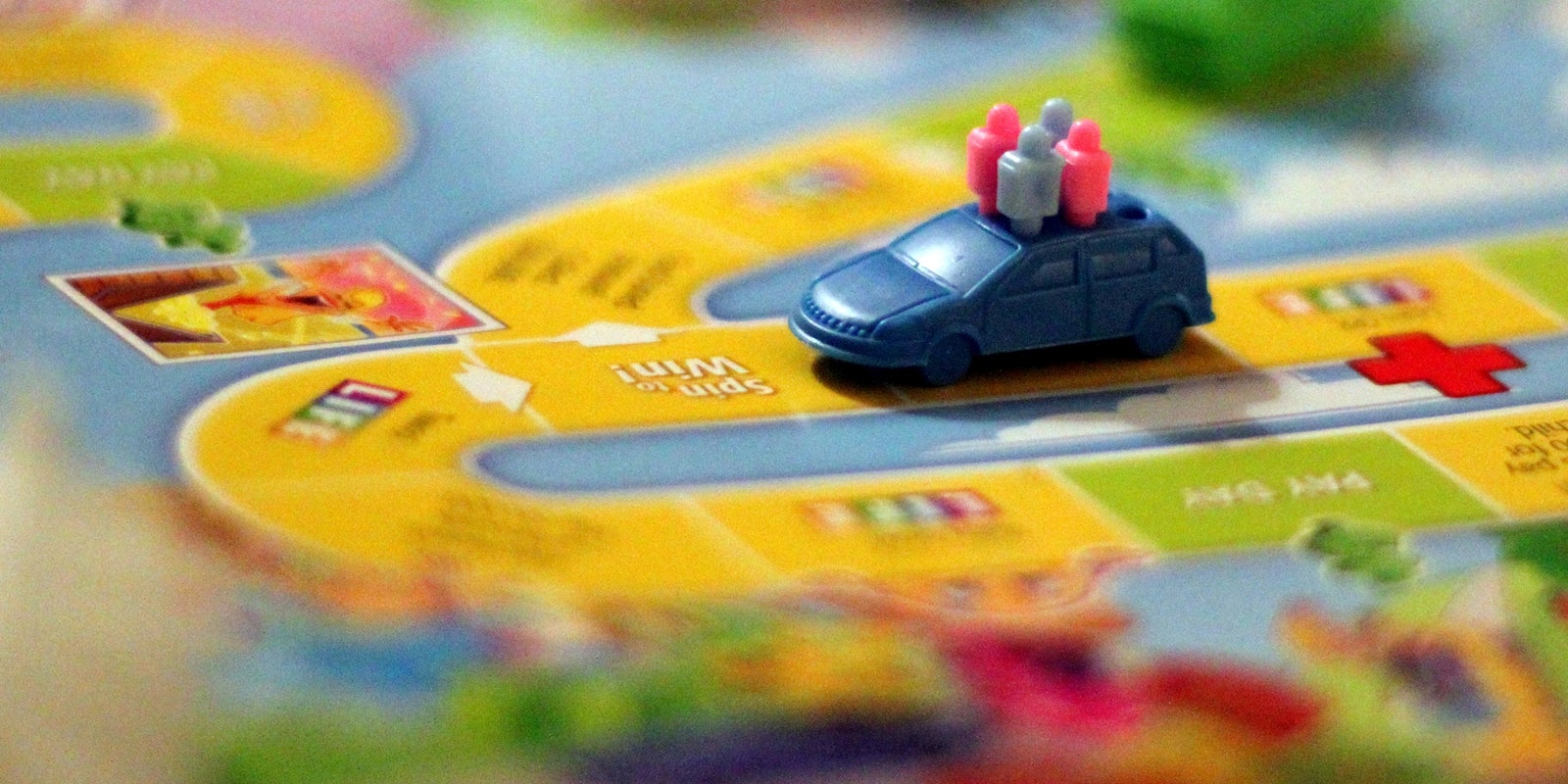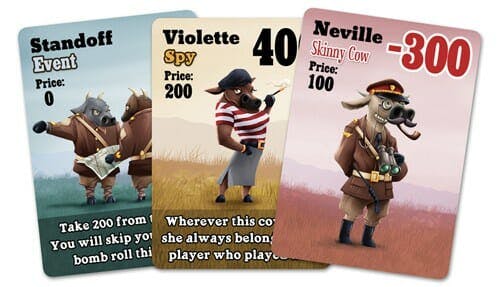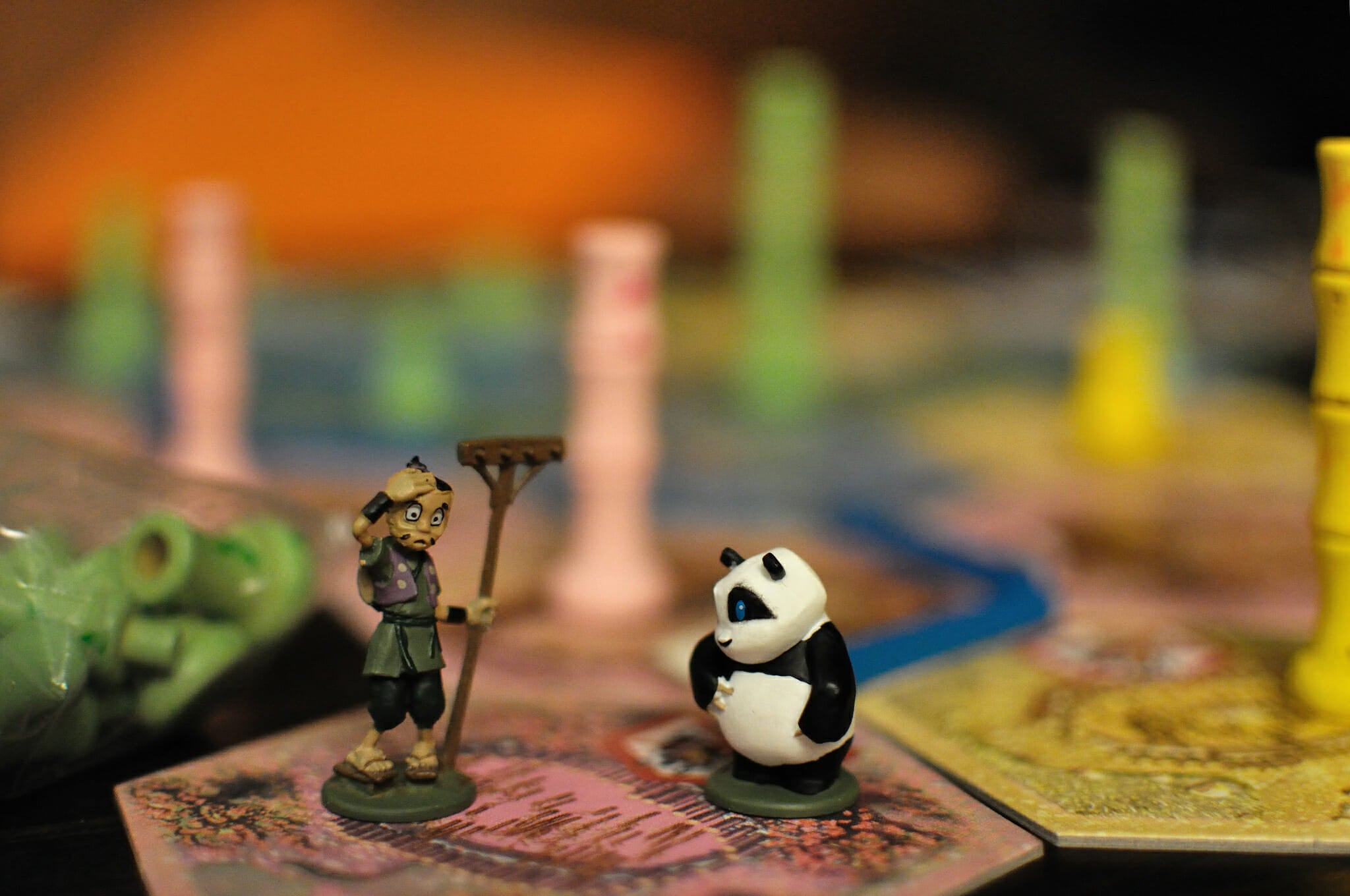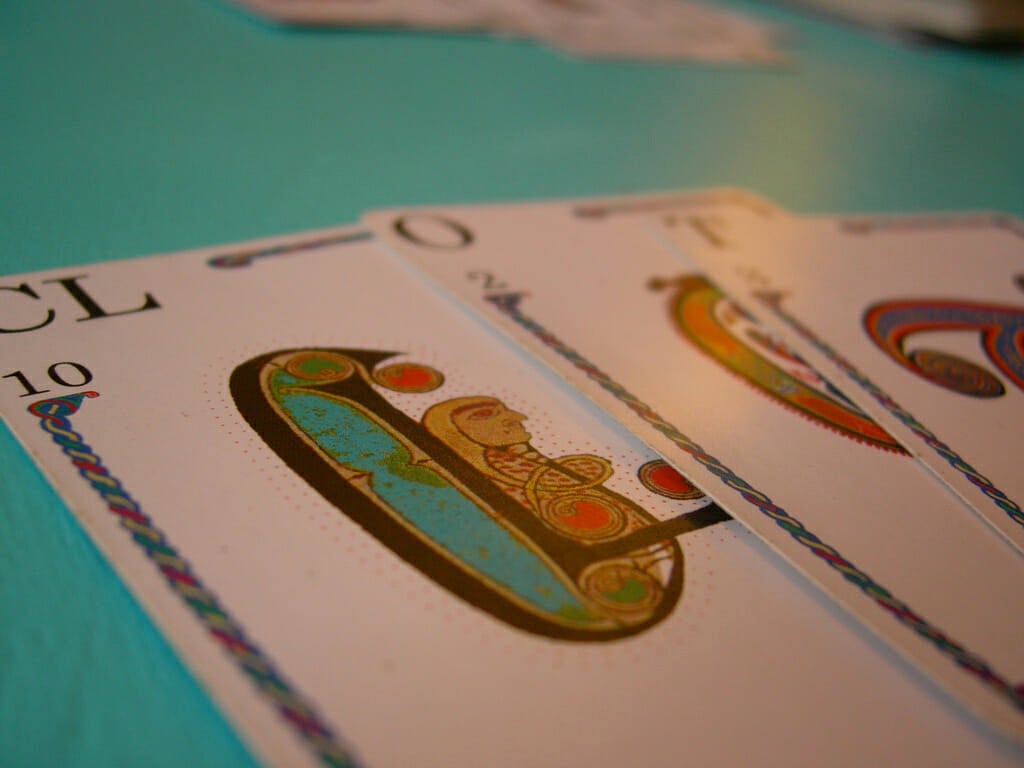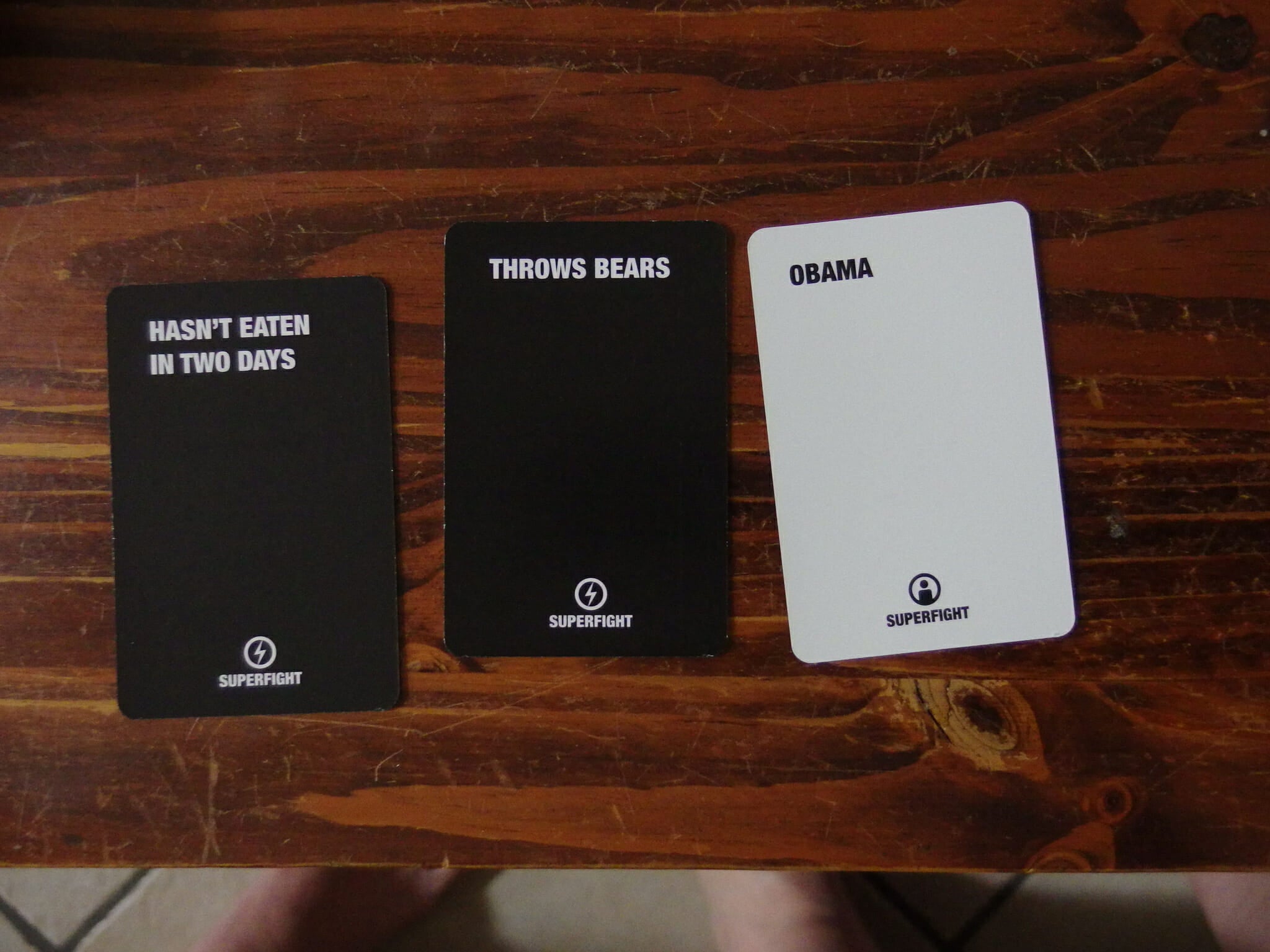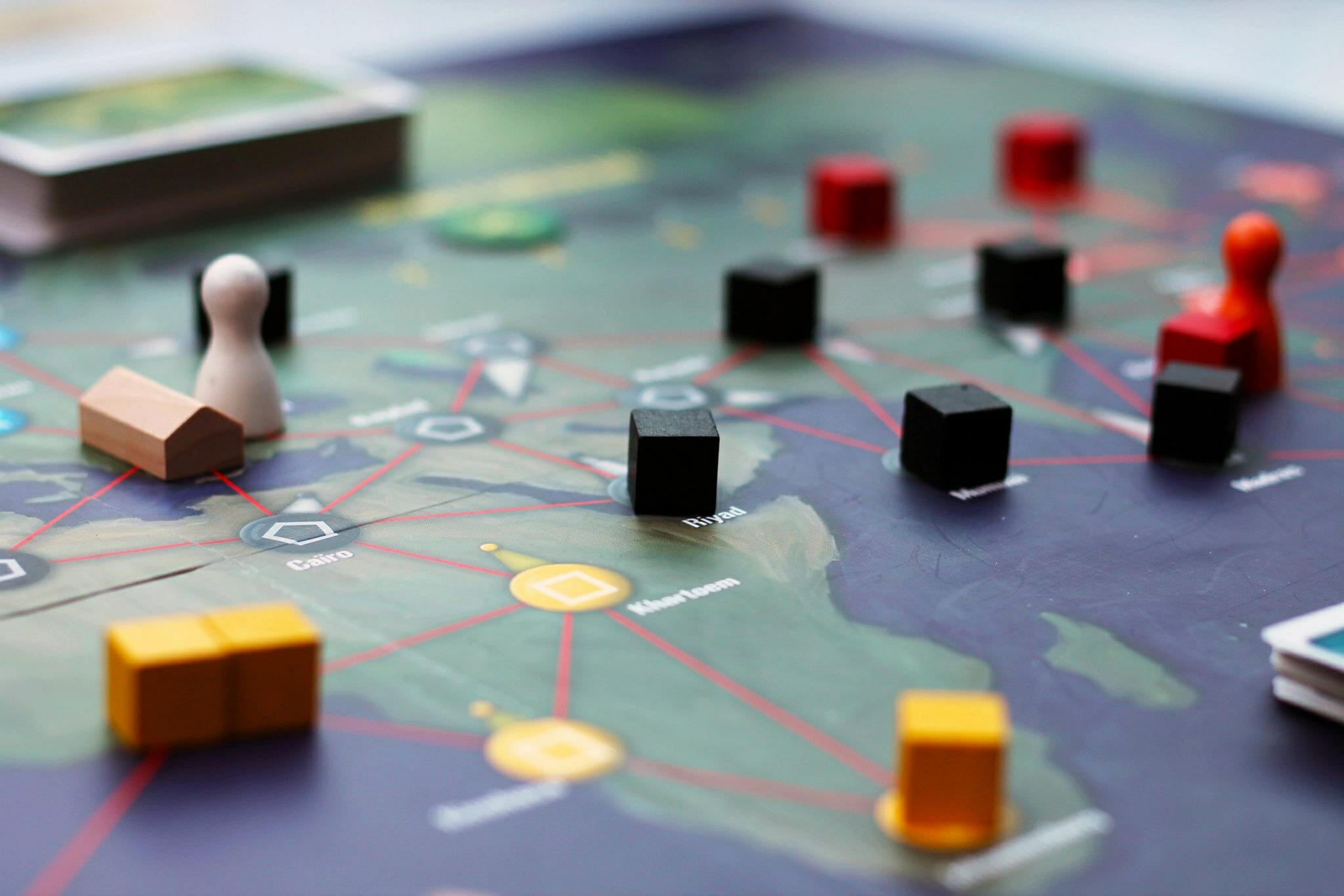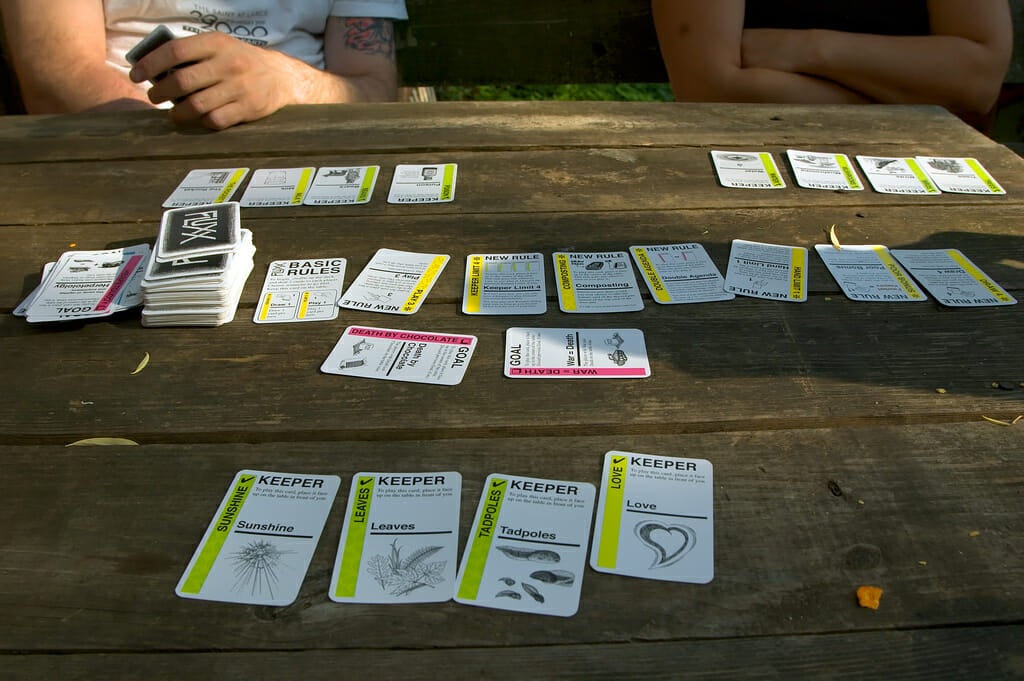Family game nights deserve to be met with more enthusiasm and less groaning. But it’s high time we all admit that the old standbys of our childhoods are tired—and ultimately not all that fun.
Candyland, Monopoly, Life… I grew up on many of these so-called classics, and it scared me away from board game culture for decades. I thought every game had to be a multi-hour (or in the case of Monopoly, multi-day) affair with complicated rules and next to no fun. (Jesus Christ, who thought Chutes and Ladders was a good idea?)
But there’s been a resurgence in board game culture in recent decades, leading to a wealth of options easily adaptable for small groups and families. Combine that with a plethora of getting-started videos on YouTube that take away the angst of reading through a giant rule book and user ratings on sites like BoardGameGeek, and all of a sudden finding the right game for the right group is as easy as Connect Four.
Below, we’ve collected 10 of the best board games for families (with a few card games mixed in) that are great for small groups, including younger players. Almost all have a play time of less than an hour, so you can mix and match or squeeze in one more round before bedtime.
The best board games for families
1) Acquire
Play this instead of: Monopoly
Recommended ages: 12+
Number of players: 3-6
Time to play: 90 minutes
BoardGameGeek rating: 7.4
Take the grid mechanics of Battleship, the economic savvy of Monopoly, and the turbulence of the stock market, and you have Acquire, the game of building, growing, and investing in hotel chains. Gameplay is pretty simple: Players just take turns placing tiles on a grid, starting and merging hotel chains according to some simple rules. It might sound a little dull to the younger crowd, but it’s a good way to teach tweens about investment, and there’s plenty of math involved to keep those skills sharp too.
2) Carcassonne
Play this instead of: Battleship
Recommended ages: 8+
Number of players: 2-5
Time to play: 30-45 minutes
BoardGameGeek rating: 7.4
This peaceful tile-based game from Z-Man requires no reading and very little math, making it ideal for young minds. Simply go around the table placing tiles that have fields, land, and roads on them to build a kingdom of cities and farms. Like in dominos, like types have to line up with like, which is a good way to help hone spatial reasoning. Some of us (ahem) still struggle to dial in the strategy needed for really dominating the scoreboards with farmers, so it’s a good thing it’s a different game every time you sit down to play.
3) Unexploded Cow
Play this instead of: Operation
Recommended ages: 12+
Number of players: 2-6
Time to play: 25 minutes
BoardGameGeek rating: 6.1
“Europe. Summer. 1997.
“You have discovered two problems with a common solution: mad cows in England, and unexploded bombs in France.”
That’s the hilarious backstory of Unexploded Cow, a dice and card game in which you collect cows in a herd and roll the die to see which cows explode, giving you profits from the grateful towns in France. Just watch out for the sneaky spy cows, and whoever has the most money at the end wins.
Best of all, Cheapass Games designed the game to be played with cards and tiles you can print for free (but the deluxe edition released after a Kickstarter in 2012 has some pretty fantastic art).
4) Takenoko
Play this instead of: Life
Recommended ages: 8+
Number of players: 2-4
Time to play: 45 minutes
BoardGameGeek rating: 7.4
The fact that the Game of Life is a tedious and dull “adventure” motivated solely by a job and children and that sees players at the mercy of uncontrollable spins might be accurate, but it’s far from fun. So ditch the reality and go feed pandas instead.
In Takenoko, each player tries to achieve certain objective cards by growing different types of bamboo or feeding a roaming panda different varieties. You expand the territory, irrigate for farming, fertilize soil, and so forth, so there’s still a true-to-life feeling to it. Heck, there’s even a different outcome for each roll of the weather die. Younger players will love the adorable panda, and grownups will appreciate the escape from the anxiety of having to negotiate another salary.
5) King of Tokyo
Play this instead of: Yahtzee
Recommended ages: 8+
Number of players: 2-6
Time to play: 30 minutes
BoardGameGeek rating: 7.3
Admit it: The only fun part of Yahtzee is the loud crack of a half dozen dice raining down on your dining room table. But wouldn’t it be better if you threw some goofy monsters into the mix too? Enter King of Tokyo.
This one’s a king-of-the-hill–style game that pits players against one another as they roll dice to dole out attacks, slowly heal, or rack up victory points. First player to 20 victory points—or the last monster standing—wins. To keep things interesting, there’s a full deck of special ability cards that you can buy with energy tokens, and the board opens up another spot in Tokyo for groups of five or more.
6) Codenames
Play this instead of: Charades
Recommended ages: 14+
Number of players: 2-8
Time to play: 15 minutes
BoardGameGeek rating: 8.0
Lay out 25 cards in a five-by-five grid, then divide the group into two teams. Each team will designate a “spymaster,” who will look at the legend to determine which words in a 25-word array they’re trying to get their teammates to guess, then give one-word clues to help them try to get there. It’s like Password, sort of, but with the added stress of an “assassin” word hiding among the rest that you have to avoid at all costs. First team to guess all of their words—without hitting the assassin—wins.
Three things keep this game fresh and fun for families: 1) With hundreds of double-sided cards and four different sides to each key card, there are practically endless iterations of this game. 2) English, being the tricky language that it is, complicates matters somewhat with homophones and words that double-agent as different parts of speech. So while your spymaster might think that “verbs” is a perfectly cromulent clue for “sprint,” “cook,” and “perk,” you might be thinking of the cell service provider, a chef, and a bonus instead. 3) Some people’s trains of thought just don’t run on the same tracks as others’. You’ll have to figure out if your teammates are prone to overanalysis or hyperliteral translations before you accidentally lead them astray.
Psychology, etymology, and a spy thriller all in one? Who can resist?
7) Quiddler
Play this instead of: Scrabble
Recommended ages: 8+
Number of players: 1-8
Time to play: 30 minutes
BoardGameGeek rating: 6.0
People who make a living as editors enjoy the old board game standby, but we understand how its appeal might start and stop with that particular demographic. Quiddler, played with cards instead of tiles, takes some of the struggle out of the equation by asking players to come up with words using the letters in their hand. First player who can use all of his or her letters goes out, triggering a last round for everybody else. Repeat with additional hand limits, from three all the way up to 12. (Golf rules, so you’re stuck with the points in your hand, and lowest score wins.)
Because you can divide nine cards up into three three-letter words, it’s a fine way to build kids’ vocabularies. Set a higher minimum word length for the adults to level the playing field, or just use a handful of cards to teach kids about anagrams (rats, tars, star, arts) and a different way of looking at things.
8) Telestrations
Play this instead of: Pictionary
Recommended ages: 12+
Number of players: 4-8
Time to play: 30 minutes
BoardGameGeek rating: 7.1
We are universally terrible at drawing, and that humor makes games like Pictionary somewhat hilarious regardless of the company. But in Telestrations, you complicate matters by introducing a Telephone-esque level of confusion to the equation, which amplifies the hilarity tenfold.
Each player starts with a prompt and a dry-erase notepad. Doodle your word, then pass the pad to the player to your left. They have to guess what you drew and write down that word, which in turn becomes the doodle prompt for the person on their left. Once the notepad gets all the way back around, marvel at exactly how far from the original prompt players got. (To adapt this family-friendly fun for a night in with the college buddies, use Cards Against Humanity cards as prompts instead.)
If you stick with simpler words, there’s no reason younger kids might get in on the fun too, but either way, you’re in for an evening of fun, laughter, and occasional jabs at your plans to go to art school.
9) Kodama: The Tree Spirits
Play this instead of: Uno
Recommended ages: 13+
Number of players: 2-5
Time to play: 20-40 minutes
BoardGameGeek rating: 7.1
Do you like My Neighbor Totoro? Then you’ll love this gorgeous card game about growing trees and making forest sprites happy. The mechanics are as simple as matching like items, but the age recommendation here is based on the relative difficulty added by the delicate nature of placing cards without overlapping with others and the strategy of fulfilling certain objective cards.
It’s all the zen of gardening with none of the mess.
READ MORE:
- 8 great board games for your next date night
- The best board games for big parties and groups
- The best board games of the last decade
10) Superfight
Play this instead of: Cards Against Humanity
Recommended ages: 5+
Number of players: 3-10
Time to play: 30 minutes
BoardGameGeek rating: 6.1
As hilarious as it is to play the NSFW party standby with your friends over a few beers, that one’s probably best left on the shelf when little kids or grandparents are involved. Its SFW predecessor, Apples to Apples, is moderately good fun of exactly the same format, but both games can ultimately be cracked by understanding the sense of humor of your fellow players better than anyone else.
For a different sort of competitive spirit, try Superfight, which pits fictional characters against each other in battles that their human players must defend and promote with compelling rhetoric. Sure, it promotes a certain upping of the bullshit quotient, but think of it as a study in embracing creativity instead.
11) Machi Koro
Play this instead of: Monopoly, Sim City for the billionth time
Recommended ages: 10+
Number of players: 2-4
Time to play: 30 minutes
BoardGameGeek rating: 6.8
Don’t be fooled by all the different types of cards you have to lay out as you’re setting up this game: The mechanics are really quite simple. Roll the die, determine which cards are “activated,” settle up debts, and wash, rinse, repeat. But don’t be tricked into thinking it’s a simple game about a cute little city wanting a cheese factory, either. This game can get pretty cutthroat quickly, and a runaway leader can take things over just as fast. Still, it’s great for the reinforcement of principles about city building strategy and basic economic principles.
12) Ticket to Ride
Play this instead of: Candyland
Recommended ages: 8+
Number of players: 2-5
Time to play: 30-60 minutes
BoardGameGeek rating: 7.5
If a train leaves Grand Central Station traveling west at 40 miles per hour, and another train leaves Philadelphia traveling east at 55 miles per hour, how quickly do your eyes glaze over? Reclaim the glory days of the railroad with Ticket to Ride, a game in which players race to complete routes between cities and earn points for connecting the nation (or nations, in the European variant). It’s a great primer in geography and a fun way to teach your kids about a world before self-driving cars because ugh you’re so old. As a bonus, you can take this one on the road with zero concern about losing a billion pieces in the car: The iPad app is a pretty seamless translation of the original.
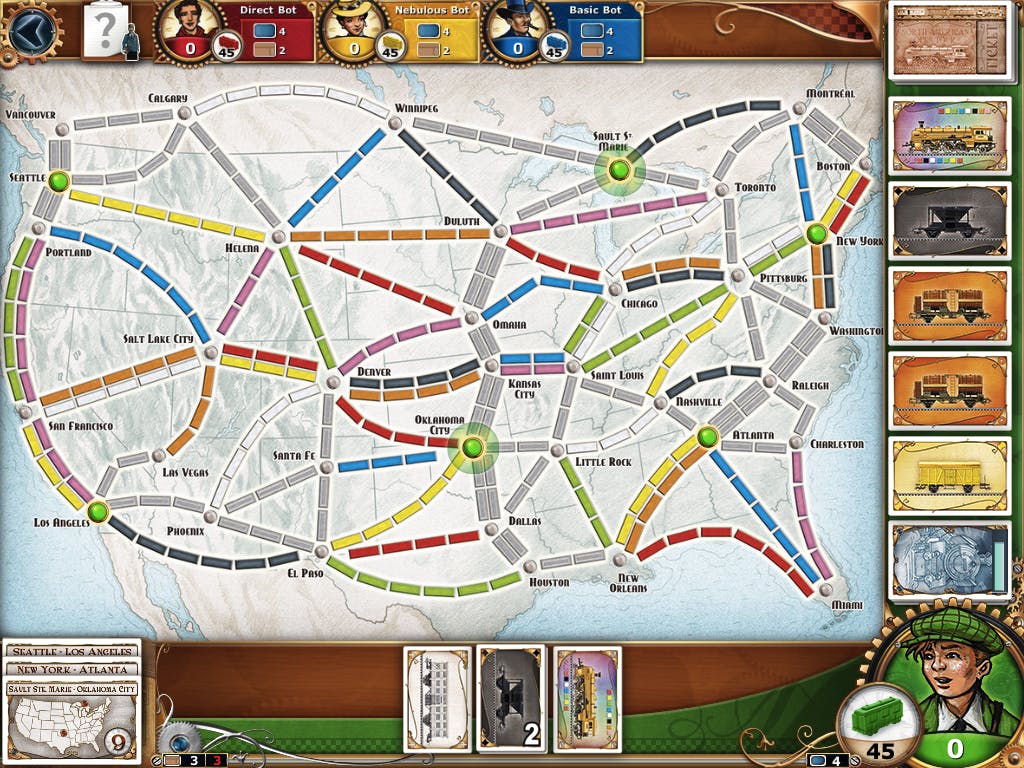
13) Pandemic
Play this instead of: Screaming at each other
Recommended ages: 8+
Number of players: 2-4
Time to play: 45 minutes
BoardGameGeek rating: 7.7
If you’ve destroyed all good will with your family with crushing victories in Machi Koro or Ticket to Ride, it might be time to try something cooperative on for size. In Pandemic, players work together using individual specialties to try to rid the world of four contagious diseases. It’s a fun change of pace to teach kids about working together toward a common goal—and a timely reminder during flu season that you really gotta wash your hands more than you think is necessary.
Pandemic: Legacy is another well-respected option for more advanced players: It boasts a higher BoardGameGeek rating, at 8.6, but it takes longer to play and is recommended for ages 13 and up on account of a mechanic that requires you to permanently alter game pieces by tearing them up or writing on them, for example. Tread carefully!
14) Concept
Play this instead of: Apples to Apples
Recommended ages: 10+
Number of players: 4-12
Time to play: 40 minutes
BoardGameGeek rating: 7.0
In this roundtable favorite, players try to earn points by deciphering a word or phrase based on associated categories and—duh—concepts. Teamwork is essential, but like with Codenames, you’ll learn an awful lot about how people’s trains of thought move as you work together to figure out exactly how many animals fall into the subcategory of Africa. It’s all about how your brain sorts information, and it’s a great way to get kids thinking in new and different ways. (But not the super young ones: The whooshing sound of too many clues going over their heads would be deafening.)
15) Kingdom Builder
Play this instead of: Connect Four
Recommended ages: 8+
Number of players: 2-4
Time to play: 45 minutes
BoardGameGeek rating: 7.0
This strategy game encourages players to pursue multiple objectives at once: Can you find a way to satisfy the three cards in play while also building up your contiguous settlements, diversifying that growth, and avoiding conflict with other players? If so, you’re in line for the most gold at the end of the game—and bragging rights. There are a lot of moving parts here, but that also lends itself to one of Kingdom Builder’s biggest perks: replayability. With different terrain, special actions, and objective cards in play for each round, gameplay is always just a little bit different each time.
16) Hanabi
Play this instead of: Blind Man’s Bluff
Recommended ages: 8+
Number of players: 2-5
Time to play: 25 minutes
BoardGameGeek rating: 7.2
In order to put on a professional fireworks show, players work together as a team to put five color-coded sets of cards, numbered 1-5, in five stacks, organized by color and in ascending order. When you put it that way, this sounds like it should take 25 seconds, not 25 minutes, but (of course) there’s a catch: Each player holds their hand of cards facing outward, so the other players can see the cards but the player can’t. The resulting gameplay is one part cooperation, one part patience, two parts memory (which ones did they say were green again?!), and three parts trust.
17) Fluxx: The Board Game
Recommended ages: 8+
Number of players: 2-4
Time to play: 30 minutes
BoardGameGeek rating: 5.7
The only rule for this board-game variant of the popular card game is that the rules change! Ultimately each player is trying to move their tokens to stand on different combinations of icons, thereby claiming a given “goal” card. But the gameplay restrictions can change with the flip of a card—how many cards to draw, a hand limit, how many goals constitutes a win—and even the board itself is subject to shuffling. It’s a lot to keep track of, but a little pegboard helps players keep up with the latest set of rules.
18) Chrononauts
Play this instead of: Watching Back to the Future for the 88th time
Recommended ages: 11+
Number of players: 1-6
Time to play: 30 minutes
BoardGameGeek rating: 6.2
Ever wonder how history might have changed had Hitler never come to power or JFK never been assassinated? Chrononauts takes the “butterfly effect” theory to its logical conclusion, as players watch history being written and rewritten before their eyes. Each player’s time-traveling character has a unique objective in this game, and action cards allow them to tweak reality as they try to achieve their mission. As a bonus for families, parents can use the opportunity to teach (or confuse) kids about some historical events, and maybe even learn a thing or two themselves.
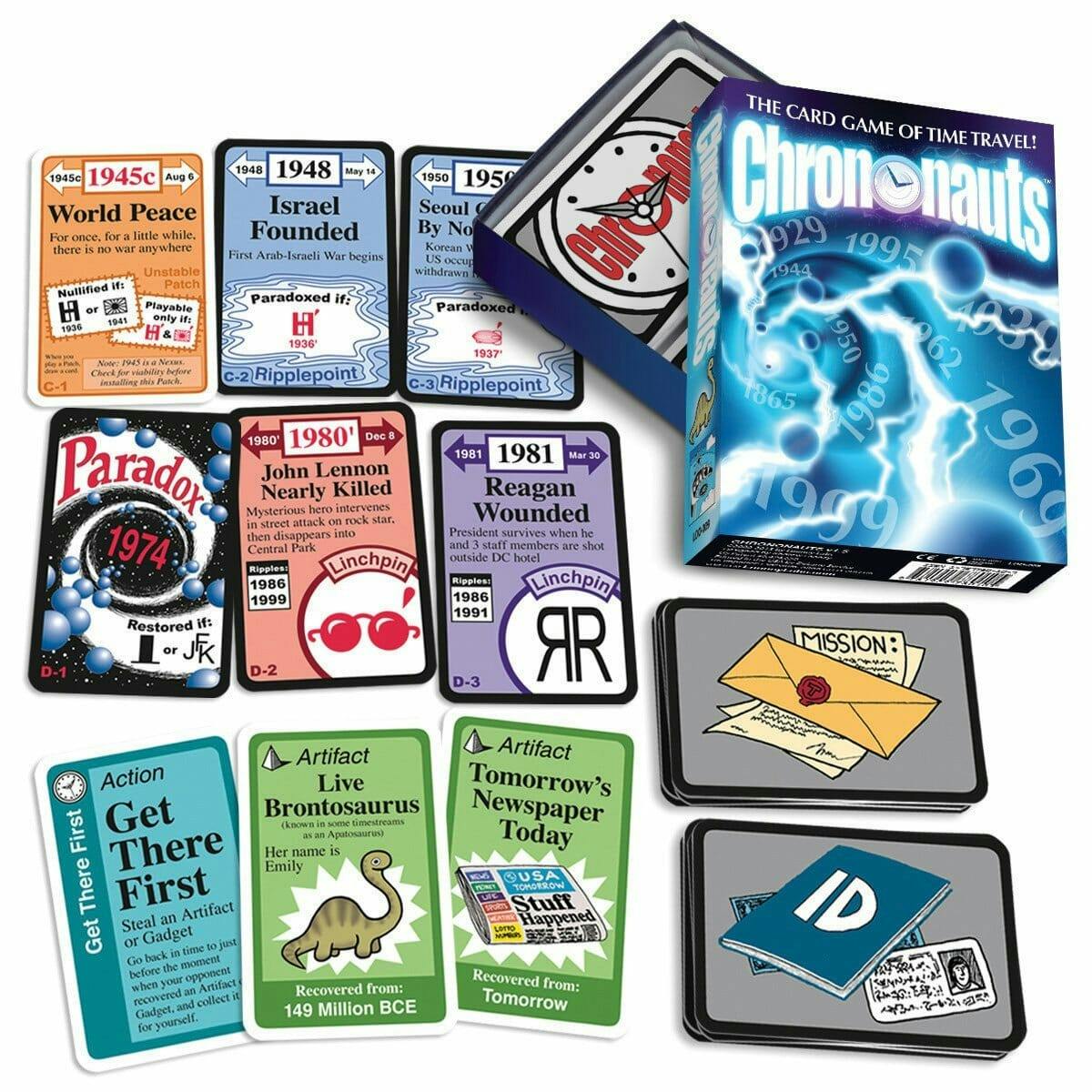
19) Portal: The Uncooperative Cake Acquisition Game
Play this instead of: Playing video games
Recommended ages: 15+
Number of players: 2-4
Time to play: 30-45 minutes
BoardGameGeek rating: 6.4
As board game translations of video games go, I’m making a note here: huge success. It’s hard to overstate the satisfaction you’ll feel as you accumulate pieces of cake in your journey as a test subject at Aperture Labs. But be careful: While you and your fellow test subjects can find new ways to move around the ever-changing board, you’re being pushed inexorably toward a fiery death at one end, and your cake, while not a lie, is constantly at risk of complete incineration.
Warning: Much like this review, this game will make very little sense to someone who hasn’t played Portal, so keep that in mind and aim this one at your teen who’s been glued to a screen for months.
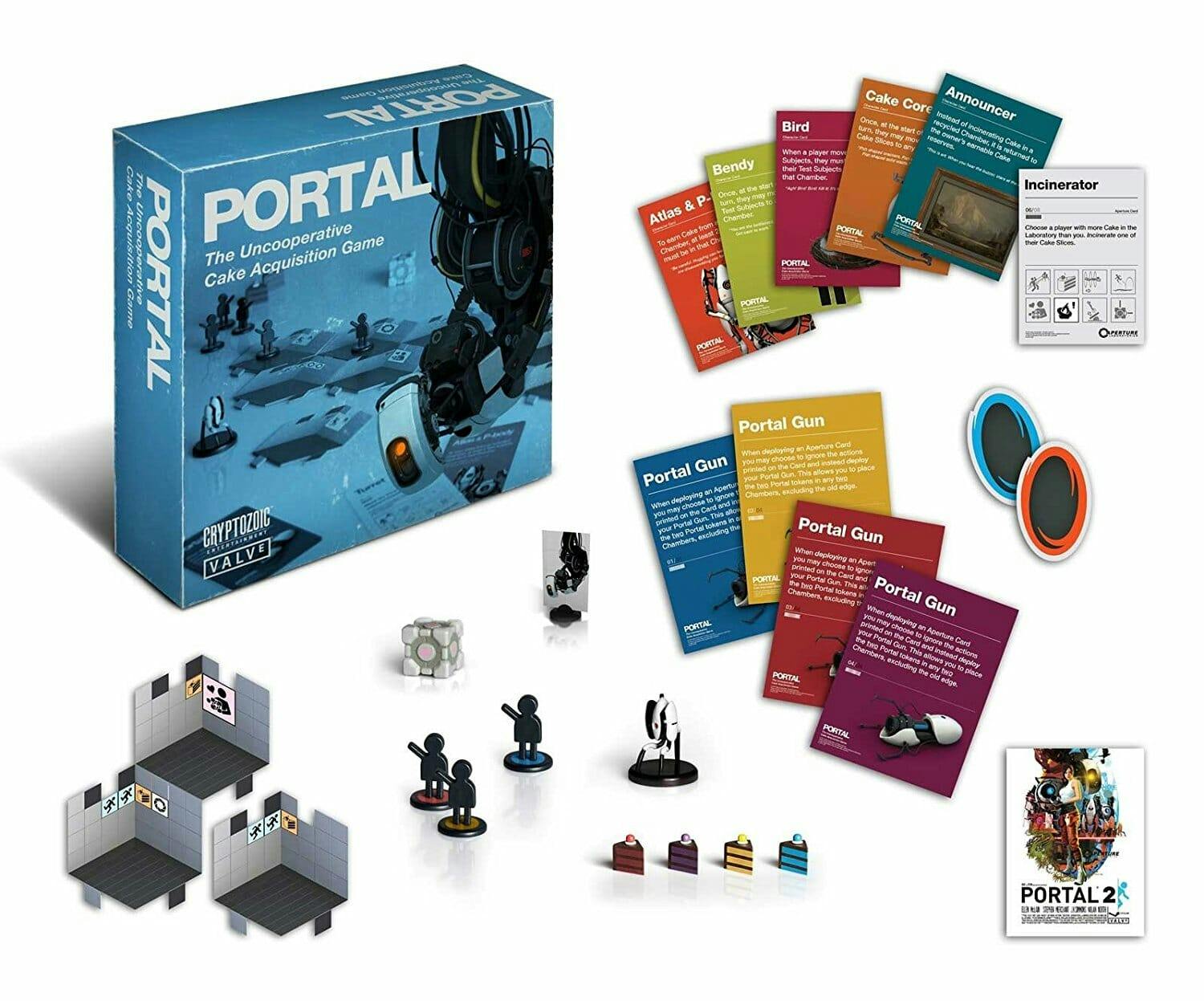
20) Tokaido
Play this instead of: Life
Recommended ages: 8+
Number of players: 2-5
Time to play: 45 minutes
BoardGameGeek rating: 7.1
Much like a family vacation, Tokaido is intended to be a relaxing journey through and new and exciting land. Also much like a family vacation, this game can easily become an anxiety-filled stress nightmare if you’re in the wrong frame of mind. You can take a journey from one end of the board to the other in whatever way you please, stopping to meet fellow travelers, eat delicious food, and do some sightseeing along the way. You have to balance your urge to race to the next incentive space with the need to slow down and take as many turns as possible. But there’s no stalling too much: Game mechanics dictate that whoever’s furthest behind goes first in the next round, thus ensuring no traveler gets left behind.
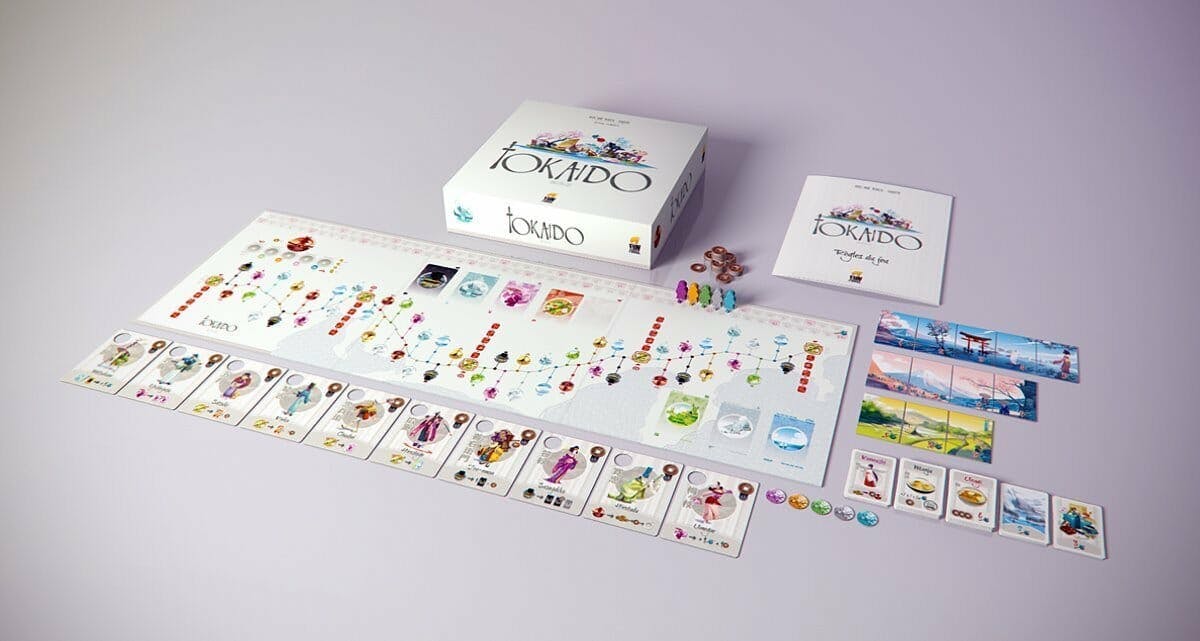
Editor’s note: This article is regularly updated for relevance.
The Daily Dot may receive a payment in connection with purchases of products or services featured in this article. Click here to learn more.
